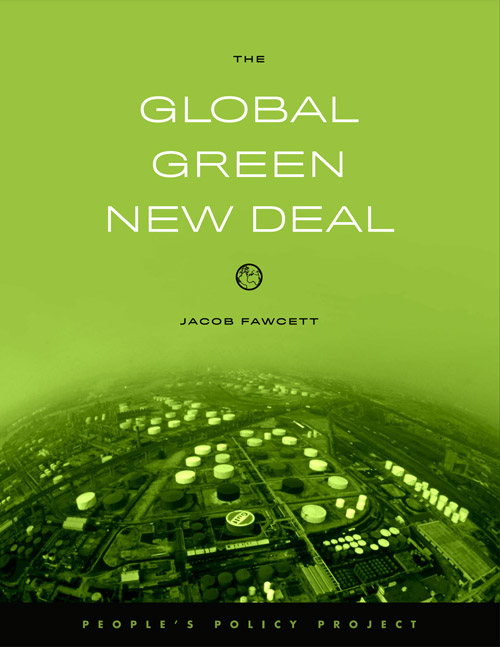Much of the policy discussion and debate surrounding Democratic proposals for a Green New Deal has focused on the domestic fight against climate change, but climate change isn’t just a domestic problem. In the coming decades, some of its most serious impacts – heat waves, flooding, and social instability – will be felt in the developing world. Poor countries already emit most of the world’s carbon emissions, and that’s where most future growth in emissions will come from, too. The international community has repeatedly called on wealthy nations to help fund adaptation and mitigation efforts abroad as a matter of justice – and survival.
Today, People’s Policy Project has released a plan for a truly Global Green New Deal (GGND). We begin with a modest proposal: that lawmakers should take seriously the standard cost estimates developed by climate science and policy research, which calls for $2 trillion in annual transfers from wealthy nations to the poorer ones. Accordingly, we propose that the US should shoulder its share of this burden – about $680 billion a year – and secure proportional commitments from other member nations of the OECD. This money would go to the Green Climate Fund, the United Nation’s primary financing vehicle for the fight against climate change.
Typical green development funding models rely on a mix of public and private investment, with a heavy emphasis on the latter. Our proposal, in contrast, does not think it safe to rely on private businesses and benevolent philanthropists to get us through this emergency, which is why we have proceeded on the assumption that the public sector should cover the entire cost.
The US government has made commitments to fund international development before – but we’ve broken them. In 2017, for example, President Donald Trump announced that he would renege on his predecessor’s agreement to deliver $3 billion to the Green Climate Fund, which he described as a “scheme to redistribute wealth out of the United States”.
That’s why the GGND also proposes three distinct funding approaches that are much more resilient to political instability in the United States than past approaches. Instead of relying on Congress and the President to approve continuing funding every year, we propose that the US should rely on a large one-off transfer of cash financed by regular treasury bonds, issuing one-off special-issue treasury bonds to the Green Climate Fund, or establishing annual GCF transfers as mandatory spending. Each offers a distinct set of advantages and disadvantages for policymakers to choose from.
Moving forward, climate activists and policymakers will have innumerable problems to solve in pursuit of green and just development abroad. Our financing proposals, for example, are likely to provoke domestic budget fights that will in turn require mobilized political opposition against the push for austerity. There will also be a need for opposition to attempts by the private sector to capture the GGND funding through green profiteering and exploitative financing. The Global Green New deal can’t solve the entire climate change puzzle – but by pushing for adequate, reliable funding, we hope to solve two very large pieces.

